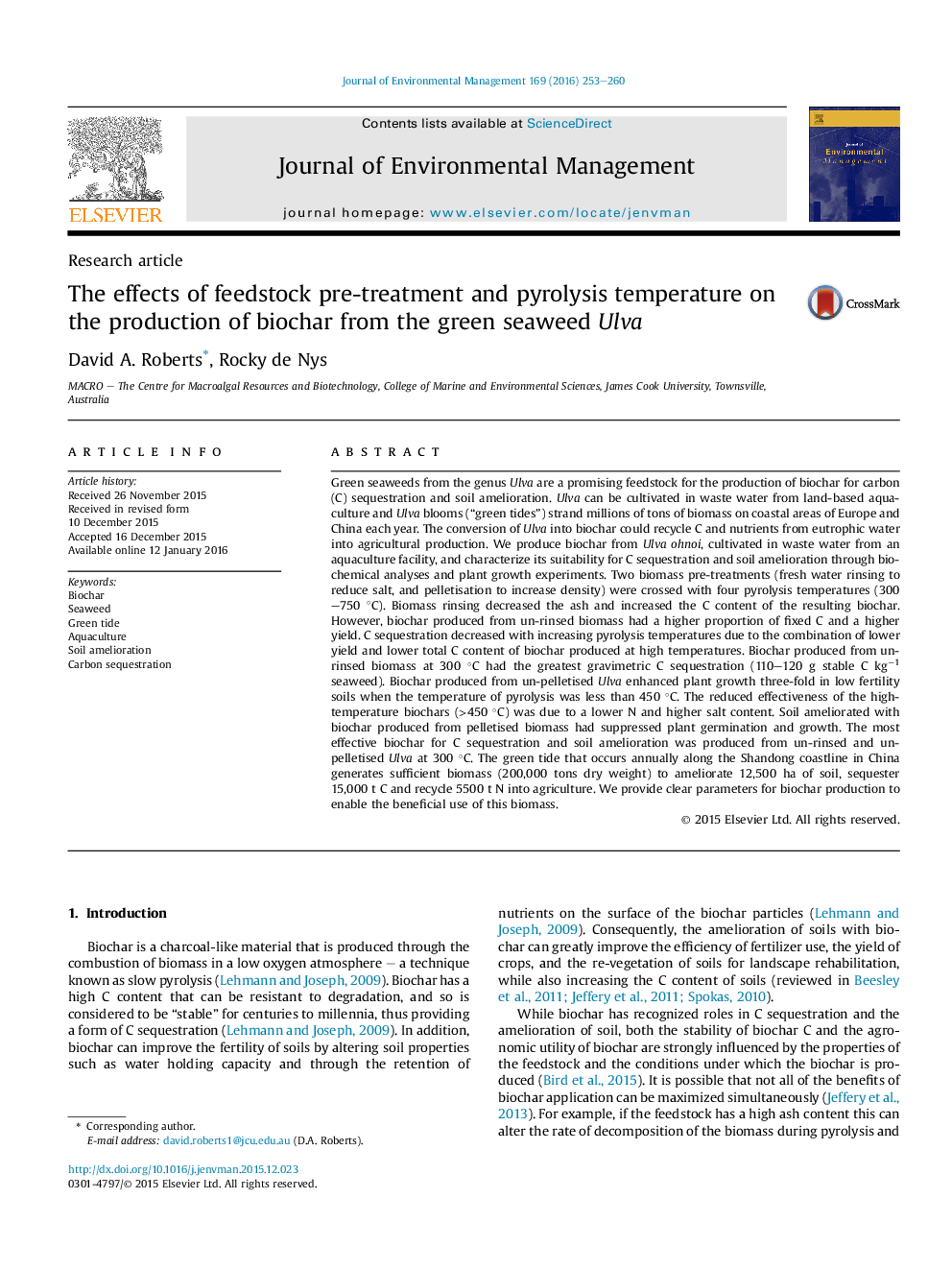| کد مقاله | کد نشریه | سال انتشار | مقاله انگلیسی | نسخه تمام متن |
|---|---|---|---|---|
| 1055456 | 1485243 | 2016 | 8 صفحه PDF | دانلود رایگان |

• Green seaweeds can be used as nutrient biofilters for land-based aquaculture.
• We produce biochar from a green seaweed (Ulva) grown in water from a prawn farm.
• Biochar produced at lower temperatures were the most effective soil ameliorants.
• Rinsing and pelletisation of Ulva reduced the efficacy of the biochar.
• Conversion of Ulva into biochar recycles C and N from waste water into agriculture.
Green seaweeds from the genus Ulva are a promising feedstock for the production of biochar for carbon (C) sequestration and soil amelioration. Ulva can be cultivated in waste water from land-based aquaculture and Ulva blooms (“green tides”) strand millions of tons of biomass on coastal areas of Europe and China each year. The conversion of Ulva into biochar could recycle C and nutrients from eutrophic water into agricultural production. We produce biochar from Ulva ohnoi, cultivated in waste water from an aquaculture facility, and characterize its suitability for C sequestration and soil amelioration through bio-chemical analyses and plant growth experiments. Two biomass pre-treatments (fresh water rinsing to reduce salt, and pelletisation to increase density) were crossed with four pyrolysis temperatures (300–750 °C). Biomass rinsing decreased the ash and increased the C content of the resulting biochar. However, biochar produced from un-rinsed biomass had a higher proportion of fixed C and a higher yield. C sequestration decreased with increasing pyrolysis temperatures due to the combination of lower yield and lower total C content of biochar produced at high temperatures. Biochar produced from un-rinsed biomass at 300 °C had the greatest gravimetric C sequestration (110–120 g stable C kg−1 seaweed). Biochar produced from un-pelletised Ulva enhanced plant growth three-fold in low fertility soils when the temperature of pyrolysis was less than 450 °C. The reduced effectiveness of the high-temperature biochars (>450 °C) was due to a lower N and higher salt content. Soil ameliorated with biochar produced from pelletised biomass had suppressed plant germination and growth. The most effective biochar for C sequestration and soil amelioration was produced from un-rinsed and un-pelletised Ulva at 300 °C. The green tide that occurs annually along the Shandong coastline in China generates sufficient biomass (200,000 tons dry weight) to ameliorate 12,500 ha of soil, sequester 15,000 t C and recycle 5500 t N into agriculture. We provide clear parameters for biochar production to enable the beneficial use of this biomass.
Journal: Journal of Environmental Management - Volume 169, 15 March 2016, Pages 253–260